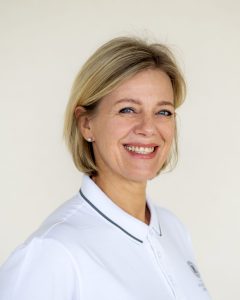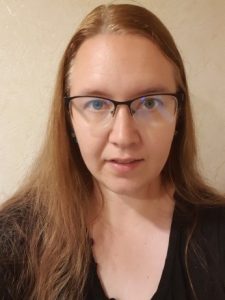Physical and Mental Well-being at the Focus of Sport and Health Week

“A physically active and healthy lifestyle leads to good health, while a passive lifestyle leads to a higher risk of noncommunicable diseases, a lower quality of life, and a shorter life expectancy. Physical inactivity is one of the main health risk factors, alongside an unbalanced diet and harmful habits. While the link between physical activity and good health is becoming better understood, the number of people who are physically active remains low. The Lancet, a popular medical journal, has reported that one in three adults and 80% of adolescents worldwide are not physically active enough. According to WHO (World Health Organization), 3.2 million people worldwide die each year as a result of insufficient physical activity”, says Assoc. Prof. Asta Mockienė, a coach at the VMU Sports Centre and one of the organisers of the Sport and Health Week that took place at the University on 17-20 April. The aim of this Week is to invite and bring together the University community for wellness and physical activity events.
According to Assoc. Prof. Mockienė, the Sport and Health Week is an event that has been taking place for eight years now, during which the university community has the opportunity not only to test themselves in various sports, but also to carry out an analysis of the components important for health.
“This year, as every year, everyone had the opportunity to undergo a body composition analysis, which has a strong correlation with health. It measures body fat, muscle mass, fluid retention, mineral content, basal metabolic rate, biological age and other indicators that help assess dietary habits, physical activity, risk of certain diseases, the effects of exercise, and the rate of ageing. We also performed a spirometry test to measure oxygen saturation in body tissues. Moreover, we measured grip strength, which is an important indicator of health. This year, we have also included the FMS (Functional Movement Systems) test, which assesses movement quality. If movement quality is poor, the likelihood of injury increases. Those who took the tests received recommendations on how to adjust certain measures,” said the coach, describing the Health Day activities.
Highest risk for those with low physical activity
Speaking about the main risks to our health, the VMU associate professor points out that low physical activity, unhealthy diet, stress, and bad habits are the biggest health risk factors. However, regular physical activity is recognised by researchers as the best strategy (among intellectual activity, social activity, and healthy eating) to improve overall health – both physical and mental.
“Looking at the health indicators of the VMU community, which we measure every year during the World Health Day at VMU, it should be noted that about 70% of employees are overweight or obese. Also, the movement quality of many community members is unfavourable to their health and can only be improved through physical activity,” Mockienė points out.
That is why for several months now, VMU employees have had the opportunity to participate in the differential walking exercise every Wednesday, led by coach Assoc. Prof. Mockienė. “It is a scientifically based, simple, short, effective, equipment-free exercise system. Differential walking involves cyclic and rhythmic movements of the arms and legs. Because we sit and bend forward a lot in our daily activities, there is an imbalance between muscle groups; therefore, during differential walking, the arm movements are performed only backwards. The performance and sequence of the exercises are based on several physiological patterns: patterns of blood flow, microcirculation, and fascia movement, as well as rhythms of the whole body and their coordination. It has been shown that 10 minutes of differential walking exercise improves blood circulation, heart function, tissue respiration and normalises fascial tension. This exercise improves posture, balance, body stability, and shoulder mobility. It is estimated that 57% of the Lithuanian population dies from cardiovascular diseases, so we should prioritise cardio training, which strengthens the cardiovascular system and helps control overweight,” says VMU Sports Centre coach Assoc. Prof. Mockienė.
Biofeedback – for developing relaxation habits
One of the main goals of VMU is to foster a holistic health promotion system that encourages the development of positive personal attitudes and behaviours towards health. In addition to promoting physical activity, the University also focuses on the importance of mental health. Dr. Gabija Jarašiūnaitė-Fedosejeva, Head of the Department of Psychology, points out that people who visit the VMU Psychology Clinic often come to the clinic because of stress and anxiety, which sometimes manifest themselves in physical symptoms. “When people are constantly under stress, they complain of headaches, stomach aches, digestive problems, skin rashes, poor sleep quality, and inability to concentrate. It is noticeable that more students seek help for stress and related difficulties when midterms or exams are approaching. Some also identify a lack of time management skills as a source of stress. We are glad that more and more members of the community are interested in mental health and are not afraid to seek help when they encounter difficulties,” says the VMU researcher.
One way to develop relaxation habits and learn to cope with stress is biofeedback. After winning the infrastructure support project of the Research Council of Lithuania, we have added a couple more of these machines to the Psychology Laboratory. According to Dr. Jarašiūnaitė-Fedosejeva, biofeedback is the process by which a person initially learns to control certain physiological parameters and eventually learns to control them without equipment. “This is aimed at improving the overall functioning of the body. Thanks to special biofeedback equipment, we can monitor a person’s physiology in real time. Using special equipment consisting of a computer with software and a machine with electrodes placed on the human body, mainly on the fingers of the hand, we measure skin conductance, skin temperature, pulse rate, heart rate variability, muscle tension, and other measures. And by making this information about physiological processes available to consciousness, we can learn to control it,” the researcher explains. The learning process itself is based on the theory of operant conditioning, in which a person is rewarded for correctly performing an activity, in this case, bringing about a positive change in certain physiological variables, through visual or auditory feedback.
According to Dr. Jarašiūnaitė-Fedosejeva, the principle of biofeedback is based on monitoring physiological parameters in real-time, understanding how the body reacts to certain stimuli or actions, and using this information to consciously control biological processes. “On the screen, a particular physiological measure, such as the electrical conductivity of the skin, can be represented by a puzzle, and if it relaxes (the conductivity of the skin decreases), the pieces begin to fit together into a coherent picture, while if it tenses (the conductivity of the skin increases), the pieces stop moving and nothing happens. There are many ways to use biofeedback. It’s not limited to relaxation training. For example, if a person has ADHD, we can teach them to improve their concentration by changing the brainwave patterns in different parts of the brain. This can be done on a computer screen when trying to steer a spaceship to avoid hitting an obstacle (and this happens when the person concentrates). By using visual and auditory information in this way, physiological processes are monitored in real time, which are then trained to be controlled with the help of a specialist,” says the researcher.
Could be an alternative to drug therapy
Dr. Jarašiūnaitė-Fedosejeva, Head of the VMU Department of Psychology, emphasises that biofeedback could be an alternative to medication. “Through this process, we can learn to relax, control anxiety, even improve sleep quality, or, for example, a person suffering from cold extremities can learn to warm them up, and over time, perform these actions without the help of any equipment or specialist. Biofeedback can also improve memory and concentration, or reduce the symptoms of various chronic diseases,” the researcher emphasises.
Although the biofeedback method is already widely used by psychologists and psychotherapists abroad, it is not yet as popular in Lithuania. According to the Head of the VMU Department of Psychology, it is a good environment for specialists. “In the near future, we plan to offer all members of the VMU community, both students and staff, the opportunity to try the biofeedback method at the VMU Psychology Clinic. However, in order to better manage stress or anxiety, it is important to take care of your sleep hygiene, diet, and physical activity. All of these factors influence how we react to external stimuli and how resistant we are to disease. It is important to take time for yourself, not just work and study,” Dr. Jarašiūnaitė-Fedosejeva emphasises the importance of a balance between mental and physical well-being.














